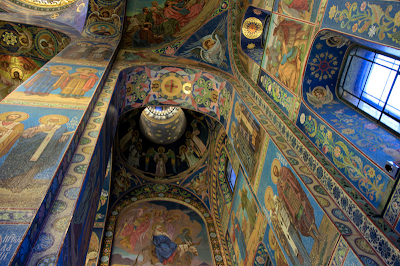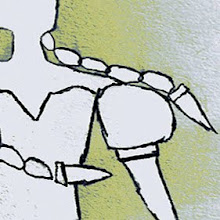In the middle 17th century Dutch literature and paintings, maids were often depicted as subjects of male desire—dangerous women threatening the honor and security of the home, the center of Dutch life—although some Johannes Vermeer contemporaries, such as
Pieter de Hooch, had started to represent them in a more neutral way, as did
Michael Sweerts.
Pieter de Hooch: Woman and Maid in a Courtyard (c. 1660)
Michael Sweerts: A Young Maid Servant (c. 1660)
Other painters, such as
Gerrit Dou, depicted attractive maids with symbolic objects, such as
jugs.
Gerrit Dou: Maid at the Window (c. 1660)
Johannes Vermeer's painting
The Milkmaid is one of the rare examples of a maid treated in an empathetic and dignified way, although amorous symbols in this work still exemplify the tradition: one of the Delft tiles depicts Cupid, the foot warmer, the coals enclosed inside the foot warmer, the wide-mouthed jug (often used as a symbol of the female anatomy)...
Since you're still reading this blog post, you might be interested in
Decoding Eroticism in Dutch Golden Age Painting.
Johannes Vermeer: The Milkmaid (c. 1658)
The magnificent oil painting shows a low-ranking indoor servant in a plain room, pouring milk into a squat earthenware container, now commonly known as
Dutch oven, on a table. Also on the table are various types of bread.
She is a young sturdily built woman wearing a crisp linen cap, a blue apron and work sleeves pushed up from thick forearms.
There is a foot warmer is on the floor behind her, near
Delft wall tiles. Intense light streams from the window on the left side of the canvas.
The humble woman is attentive pouring the trickle of milk because the bread pudding she's making can be ruined when the ingredients are not accurately measured or properly combined. By depicting the working maid in the act of careful cooking, the artist presents not just a picture of an everyday scene, but one with ethical and social value.
« In the end, it is not the allusions to female sexuality that give this painting its romance or emotional resonance — it is the depiction of honest, hard work as something romantic in and of itself. The Milkmaid elevates the drudgery of housework and servitude to virtuous, even heroic, levels.» –Raquel Laneri











.jpg)
.jpg)








































